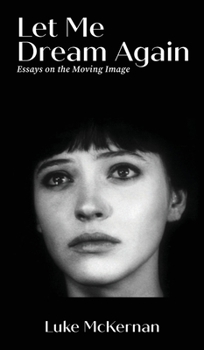Let Me Dream Again: Essays on the Moving Image
What do moving images mean? How and why do they work? What do we gain by having them and what would we lose by not having them? What was it that film first brought to society that was so revolutionary, and what is the significance of the moving image in the multi-format, hybrid world through which we communicate today? In sixty short, engaging essays film archivist, curator, historian and writer Luke McKernan looks at 140 years of a bewitching medium, focussing on the importance of stories and form in shaping the moving images on our screens. It's an entertaining compendium that ranges from The Third Man to Breaking Bad, from Cheers to the opening ceremony of the 2012 Olympic Games, and takes in memory, film's literary connections (Charles Dickens, James Joyce, Stevie Smith), spoilers, misplaced reels, prequels, politics, fame, sport, AI movies, playing dead, libraries, anarchists, feral children, newsreels, David Attenborough, the birth of YouTube, screen shapes and sizes, compilation films, migration, colourisation, fairy tales, clean shirts, and stray dogs.





